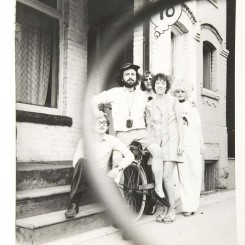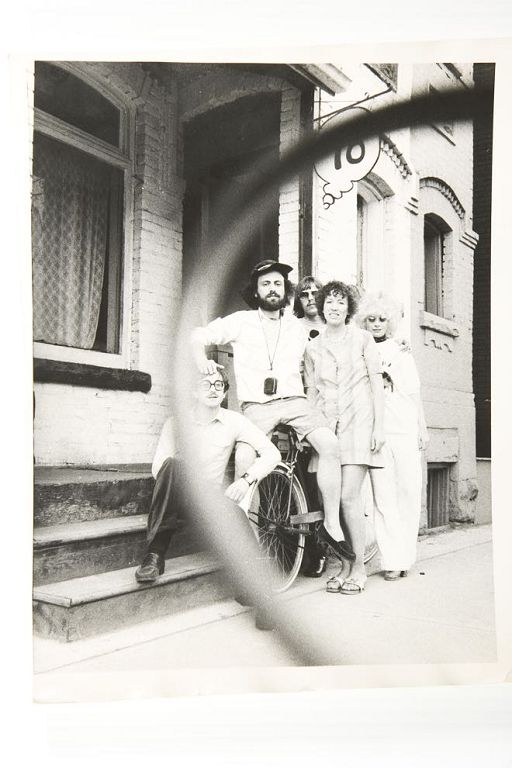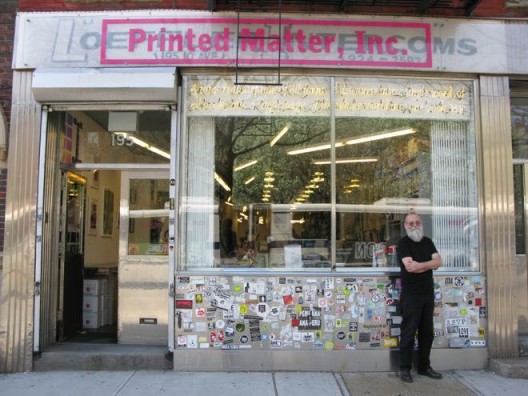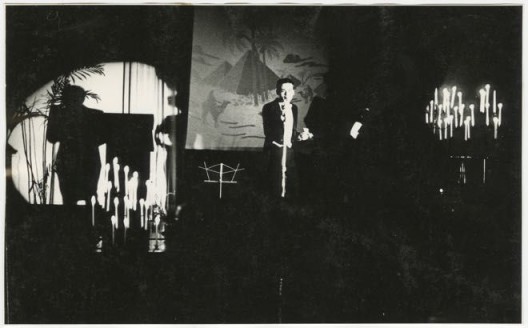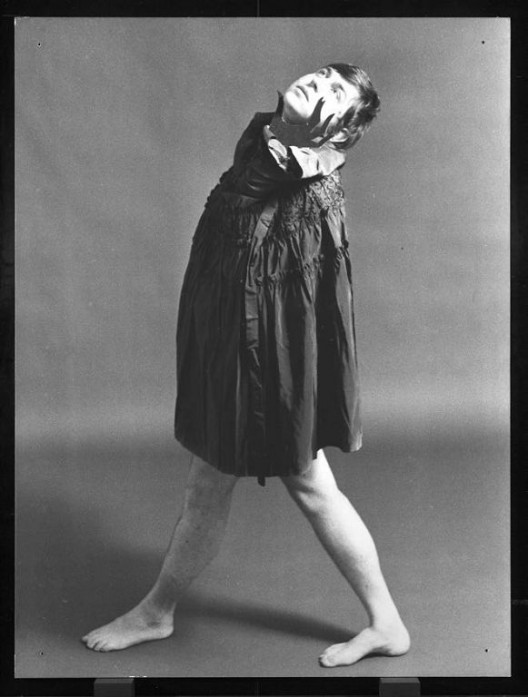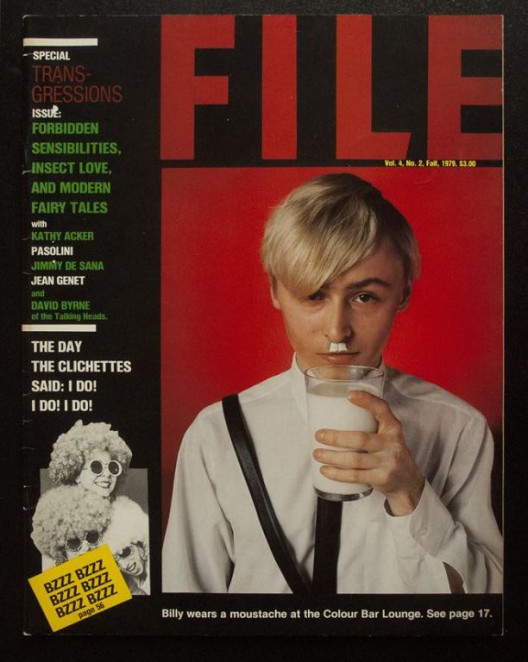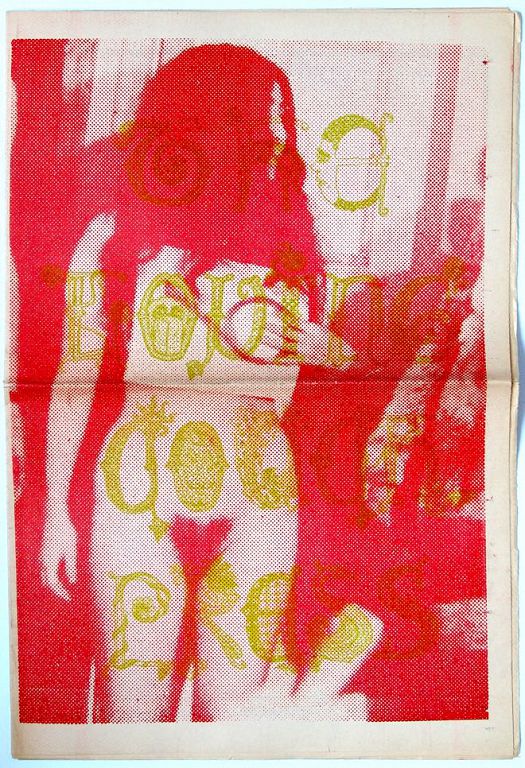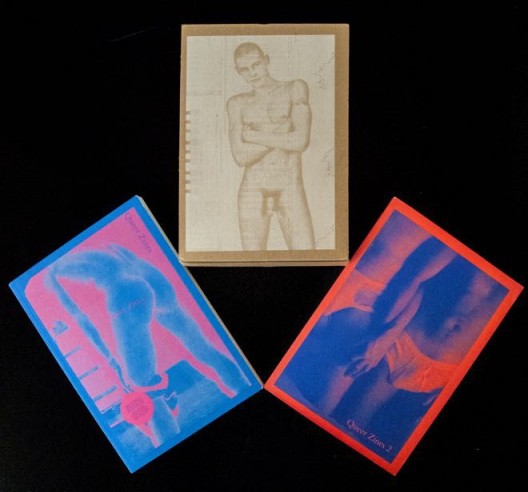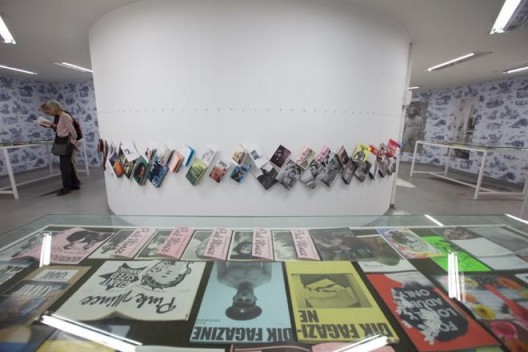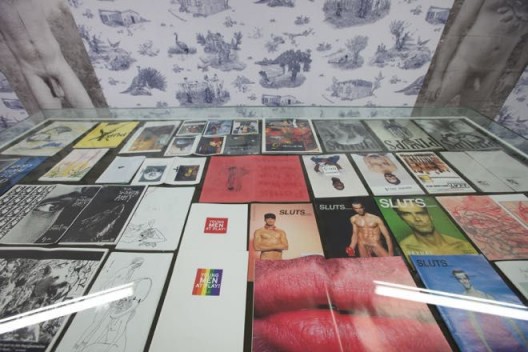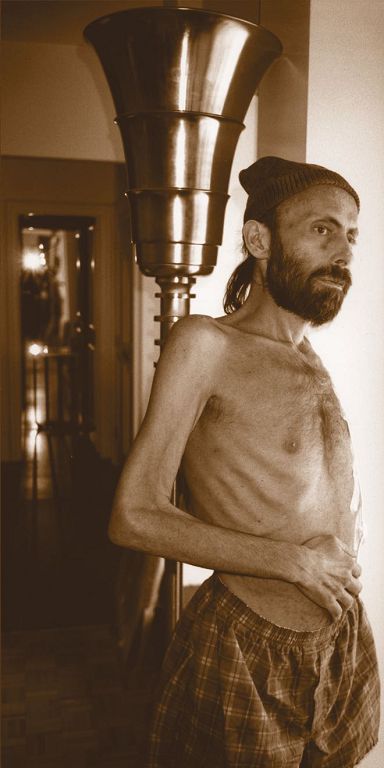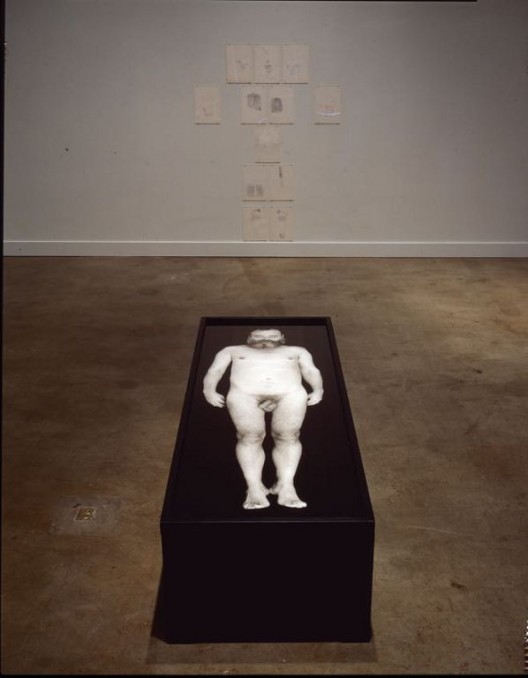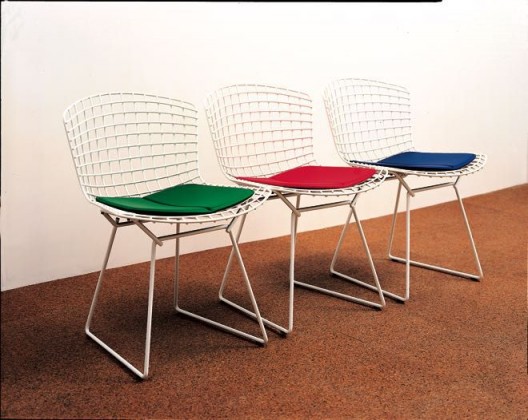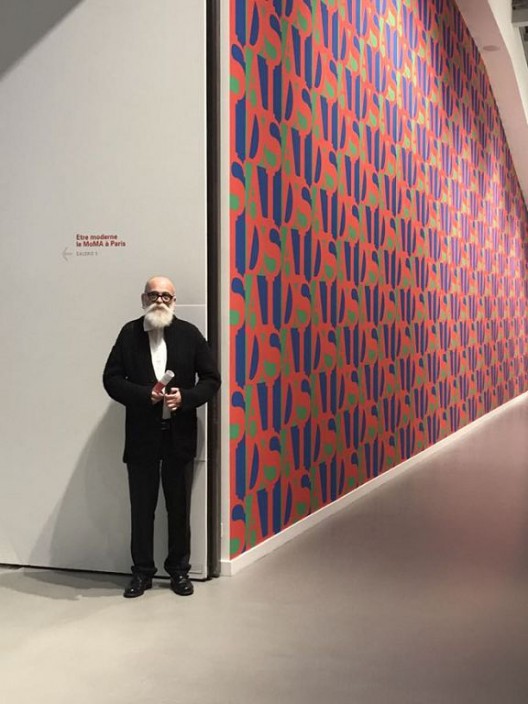Perhaps no one in the western art world today has more to say about a whole host of topics, from independent publishing, to queer history, to dealing with loss and hope, than AA Bronson. Born in Vancouver in 1946, Bronson has played a host of different roles since the late 60s, roles which straddle the art world and the realm outside. He was a founder and member of the radical artist collective General Idea, best known for infiltrating the mainstream with their “Imagevirus” series during the AIDS epidemic; but is also a prolific editor and publisher; founder of theNew York Art Book Fair and LA Art Book Fair and former Director of Printed Matter in New York; a healer; and, today, an artist and educator. In this interview, Bronson sits down with Ran Dian editor, Alvin Li, who has a wealth of experience working in queer activism, to discuss his life-long engagement in art, publishing, and community organizing.
Alvin Li (AL): Hi AA! Let’s begin at the beginning, with the birth of General Idea. In what year did you first meet with Felix Partz and Jorge Zontal, and how did General Idea come about?
AA Bronson (AAB): We first met through mutual friends in ‘69 in Toronto and we were straight out of school and [our friend] Mimi Paige had found a house that she wanted to share with us. There was originally about seven of us all living together in an old house. We were bored and Jorge and Felix and I ended up doing lots of little projects together trying to entertain ourselves.
The house, had at one point, been made into a storefront. It was a little shopping street which had been very trendy in the ‘60s and had fallen on hard times. We had a store window and essentially we used our living room as a fake store for our fake gallery—I guess our real gallery actually, where we could produce our little projects.
AL: Was there be a big artist community back then in Toronto in the ‘60s?
AAB: I don’t think there was a big artist scene anywhere in the ‘60s. [laughter] Well by today’s standards, everything was small. The art scene in Toronto barely existed. New York was not gigantic. The first time going to New York in ’73, I was able to go and visit Warhol in his studio and it was a very normal thing to do because an artist was not special back then and it was just a very small community. The first time an artist was on the cover of a magazine was in 1986.
AL: I was reading an interview and you were talking about the experience of scavenging garbage near this house. Do you remember specific instances when this kind of play turned into a critical mode of engagement with mass culture?
AAB: I think the most interesting ones are the ones that are still hard to pin down even now. There was a project where we purchased the contents of a clothing store that had gone out of the business in 1948, complete with its mannequins and display items and an inventory of women’s clothing and we recreated the store in our storefront. This is before the time of retro. I mean there were second-hand stores back in those days but there was no such thing as a trendy second-hand thrift store. It was just considered to be used goods back then. We just operated it like a normal clothing store and basically everything sold in the month of the exhibition.
It got a full-page review in the national newspaper called The Globe & Mail, but not as an art project, rather as this strange recycling of old clothing ideas and I don’t think there was even a single mention of it as an artwork.
That project was so dead on. On one level, we just reopened an existing store that could not sell a single item in its original location and with us running it, we suddenly sold everything in one month. It was the first moment in which we really dived head-first into the idea of consumerism in relation to art, in relation to making art, doing art projects.
AL: In what year did you host the first Miss General Idea Pageant?
AAB: Supposedly, the first Miss General Idea was in ‘68. Mimi was the woman who first put us together and that’s why we claimed to be formed in ‘68 because that was the also the year of the Paris riots. We like to associate with that moment in history.
AL: Right. Were you hosting it once a year as in the pageant?
AAB: We only did three consecutively. I mean, the idea was that it was an annual pageant. We held one every year from ’69 to ’71, with the 71’ event performed at the Art Gallery of Ontario and the largest one in scale. It was kind of a major event, not sure how we managed to carry that off but we did and then it took over our lives completely at that point.
We then realized we didn’t really want to do it again and so we set the date of the next ultimate pageant to be 1984, which at that time felt like some improbable time in the far distant future and then any performances we did from then on, we contextualized as being public rehearsals for the 1984 pageant.
AL: Why did you pick the year 1984? Was it in reference to George Orwell’s book?
AAB: Absolutely.
AL: What led to this interest in pageantry?
AAB: The pageant is an interesting form because it barely exists anymore. It’s a media problem. It’s something that was seen as an invention specifically for television and you can think of it as analogous to the art world in that there are winners and losers and talent contests and prizes. It’s like a metaphor for the art world. The 1971 Pageant was won by a man and the whole thing was like a pageant inside out because people who were participating were not the kind of people you would expect to participate in a beauty pageant. . . . from General Idea itself to the people who were organizing it .
Basically, the Pageant and the Pavilion together are a kind of narrative, a kind of 3-D novel; we had been building the Pavilion in segments and in the rooms as we would call them [were built] as installation in galleries and museums. But [people] took art very literally . . . we were getting more and more questions about where was the Pavilion going to be, when were we going to start building it and so on. In ’77 we were invited to do a project by a university in Canada and we created a full-scale ruin of the auditorium from the Pavilion in the actual ruins of an old, very large factory and that acted as a set piece that we could document and include in photo pieces and in video tapes. It also allowed us to act more, to leave our role as architects and become archaeologists. It was a much more appropriate role in relation to galleries and museums, to be an archeologist.
1980 was the year when suddenly conceptual art, video art and all those things vanished overnight and painting came back. We had to invent a way also to return to painting, a more traditional media, without abandoning our projects and by becoming archeologists we could work on historical remnants of General Idea to become painters and sculptors in a sense, while still working within our weird narrative.
AL: With this return to painting, were you hoping to have a voice in the mainstream art world discourse at that point, or were you trying to make something that would sell and so you could make a living?
AAB: The best artists didn’t sell. I mean, nobody imagined they could make a living from selling art, really nobody. [It’s] very different from today when every art student graduates imagining they’re going to make a fortune.
We did make money from getting grants, frankly [more] than selling art. It was really a kind of a commentary on the direction the art world was going. We had our own magazine as you know, FILE Magazine. About that time there was an editorial titled The Rematerialization of the Art Object, a take on Lucy Lippard’s The Dematerialization of the Art Object (1973). It was definitely a commentary; it was tongue in cheek; in fact it was ironic, which did not go over very well with the painting community; they were not being ironic at that moment. That’s what we did; it was a way of participating in the discourse of the moment.
AL: As you brought up FILE, I would like to hear more about your interest in printed matter and publishing. You started very early. Before FILE, you also ran the Loving Couch Press, right?
AAB: Well, I used to always love books and being surrounded by books. When I went to university, I don’t actually know how it happened, but the university newspaper tracked me down and I worked with them as first a designer and soon editor. This experience showed me the possibilities of print and publishing. It also taught me all the basic techniques because really I went into that knowing nothing at all.
There was a group of us who dropped out of the university in the second year to found a commune, and we launched our own underground newspaper. It was the day of underground papers, the day of communes; every commune had its underground paper basically. Every city had its underground paper but some cities had more than one.
The thing about that moment in publishing was that [a type of printing press was invented] which allowed one to print newspaper for almost no money. The era of self-publishing and do-it-yourself started in the ‘60s because the technology was there. There’s also the mimeograph machine and the risograph, all these different things that allowed people to start publishing.
Because everything was changing a lot of printing equipment was being thrown in the garbage by companies. What was happening was small groups of basically artists were grabbing them out of the garbage and setting them up in garages, doing their own style.
AL: What year was FILE Magazine founded?
AAB: It started in ’72. There was a grant available from the government, from Trudeau, the current Trudeau’s father. [The Grant] was to encourage young people to apply for projects to benefit their communities. We applied to make a magazine which would act as a kind of communication network for Canadian artists. Canada is 5,000 miles across but it’s only a hundred miles deep, a hundred miles north of the American border; it’s pretty much the only part that’s occupied. Communication across the country is always difficult. The idea of this project was to create some sort of connection between the artists in Canada, and to our own surprise they gave us the money. FILE was essentially just a newspaper with a cover wrapped around it so that we could do it very, very cheaply.
AL: And LIFE magazine sued you for ripping off their Logo at some point, right?
AAB: Yes. We did an issue where we faked previous issues and published the covers of the previous 48 issues or something when in fact we’d only done six or eight or something. By then our distribution in New York City was quite good for a little paper like that; I think we sold more copies in New York than anywhere else. Somebody from the LIFE office came across this and gave it to their legal department, some smart-ass young lawyer decided to make his name internally by suing us.
It turned into an embarrassment because the Village Voice ran two consecutive articles lambasting LIFE for suing us, basically making fun of them, even quoting Robert Hughes, who was the art critic for TIME magazine at that point. Robert Hughes thought it was ridiculous that they were suing some rural art magazine from Canada that nobody had ever heard of. It made our name. It was a huge amount of publicity for us. They dropped the charges because it just got too silly. They did demand that we change the design. We altered the colors. Their copyright was on some kind of white block lettering on a red parallelogram. At that point, we just changed the colors.
FILE really was at its height from the late ‘70s into the early ‘80s and then we began to be so busy with our projects and gallery shows that we didn’t really have time for it anymore. It became extremely irregular later into the 80’s. There were some issues where we experimented with changing the format and, in my opinion, it was a failure and really what we should have done is just ended it at that point.
AL: In a talk you gave at the University of Chicago a few years ago, you talked about how you always wanted critics to write about FILE from a kind of queer perspective and you always had covers, especially the three of you, which involved very queer performances, at least in terms of style. What was the shape of queer discourse like at that time? Did you get feedback or were people writing about it in that way? I mean, this was before queerness and performativity gained momentum in the mainstream academic discourse.
AAB: Yes, none of that started until the late ‘80s. I’m thinking in the ‘70s there was a phenomenon that you would call a gay artist — which was always men — male artists who made either photographs or painting of naked sexy guys. That’s what being a gay artist meant in the ‘70s. It was kind of the kiss of death to be called a gay artist within the art world at large.
We were in a sense, not only in FILE but also in all our work, playing with that. Pushing on one hand, but never taking that up in the way we described ourselves but kind of daring the media, daring the critics to do that and pushing them further and further. In the mid ‘80s, we did a series of paintings and also an issue of FILE about fucking poodles — these geometric fucking poodles that are kind of like a self portrait because there are three of them.
Yes, it was interesting because the first reviews talked about them as being metaphors for working together, for collaboration — no mention of sex. Nobody really wanted to talk about the sex. Everybody who wrote about it respected that they did want to keep the discussion within the realm of art and if you included sex in the discussion at that time you would have automatically slashed the art realm. It would no longer be considered art.
Then in ‘86, there was a small journal out of England that published an article, looking at our work from a queer theory perspective. It was written by a guy who just graduated from a queer theory course in the first University in Britain that was teaching queer theory. Suddenly there was a language with which one could talk about General Idea. That opened the floodgates in a way that gave permission to people to talk about it in a different kind of way.
That was it the year we moved to New York, after ’86 it became possible to talk about queer art in a conceptual and critical way. Something changed radically at that moment.
AL: That’s beautiful. I know that you also edited a special issue of Queer Zines published by Printed Matter. How did that come about?
AAB: Well, the collection dated back to the ‘70s—to the very early ‘70s or end of the ‘60s. It comes out of this do-it-yourself publishing moment of the late ‘60s. Boyd McDonald published a little zine; it changed names quite a bit but it’s mostly known as Straight to Hell. It was sold mostly in sex shops in New York. Mostly it was readers who’d write in and tell their most shocking sexual encounters and Boyd McDonald would write political opinions, which were written in a very plain, sexual language, and it set the stage for anyone who followed him. Like “Us, as queer people, we can ignore the standards of the straight world”, it kind of seemed to say.
That kind of queer zine publishing doesn’t really get going until the ‘80s I think. We tried to ignore queer newspapers or community newspapers. We were really looking at the do-it-yourself kind of zine that had a single maker’s voice.
Bruce LaBruce’s “J.D.s” Toronto, I think it’s in the mid-‘80s, set the stage for hundreds and hundreds of other people who produced zines in that kind of style. His was photocopied; it was very focused on being outrageous and at the same time very smart and on-the-moment. There was a whole cluster of zines that came out of Toronto at that time. Also a cluster out of LA, a little bit less out of New York. That, we saw, as the beginning of a movement that then spread all across the US and Canada, where hundreds, and hundreds, and hundreds of zines were being published.
The book is, on the one hand, an overview of that history and at the same time, it describes basically every scene we wanted to describe, anything we liked we tried to get in there and tried to find out as much as we could about it. We did the whole project in three months; it was a bizarre rush. The book is put together in a helter-skelter kind of way, but it was designed in a way that it was possible to do that. I’m still very pleased with it.
We invented the New York Art Book Fair in 2006 and Queer Zines was developed within the context of the book fair; I think it must have been 2009. It was extraordinarily popular; from then on we always had a queer zine section in the New York Art Book Fair.
AL: There’s also a self-publishing collective in Shanghai called Samepaper. They show at New York Art Book Fair every year, and they also do a fair amount of queer zine self-publishing. Maybe, they only ones that I know that are coming out of China at this moment.
AAB: I’m sure they must be. [laughs] I’m sure. They probably sell them at Printed Matter, I would guess.
AL: Here in China, in Shanghai, I don’t really see much independently published printed matter. What do you think of the the state of the independent publishing industry in general, particularly the potency of queer self-publishing, today?
AAB: Well, to go back to the ‘80s for a moment, one of the reasons that the publications began was at that point there was no gay media, and [people] didn’t really see themselves represented. There was a kind of assimilationist mode of representation; it was the legacy of gay liberation. They wanted us to be able to marry, to be normal people with children, two cars and what have you.
One of the reasons for starting these zines, was because people could send them to each other in the mail, exchange zines and have some sort of network of communication that otherwise didn’t exist because there was no mainstream media for people, that, at that time, might call themselves queers. I think a lot of them had prices on them, but whether they actually exchanged hands for money is questionable.
I think the whole kind of queer identity and also trends that come out of that identity comes out of that self-publishing — of being able to picture yourself, to create an image of yourself and your community that can be seen, exchanged and sent through the mail or whatever. I think that kind of publishing is very important but my being here in Berlin, I don’t have nearly so much access to it. For some reason, it seems to be primarily a North American and British phenomenon, and although there are zines in other languages and from other places, but the majority that we’ve been able to track down are from North America and Britain.
AL: You’re right!
AAB: I have no idea why that is; I’ve never been able to figure that out.
AL: Also, the guys, the collective from Shanghai, always publish their queer zines in English. I guess there is a presumption that consumers are usually white or speak English and that the nexus of the scene is still in North America or England.
AAB: Maybe it’s partially that English has become the international language of exchange—it’s like in the art world. Being here in Berlin, it would be quite easy to survive only in English with no German at all because the art world is really an English-speaking world. And it would be easy to move through that queer world here totally in English and no trouble at all. We always comment on the amount of signage that’s in English and in stores; if there’s a sale on or anything like that, it’s always in English. It’s just very peculiar.
AL: The reason why I raised this question is because of the intimate relashionship between queer discourse and translation in the sinosphere. Queer theory gained momentum first in Taiwan after the lifting of Martial Law in 1987. With this influx of translating Western theory into Chinese; post-colonial theory and queer theory entered academic discourse in Taiwan at the same time. The scholars were concerned with issues such as: “Is queerness a complete western invention?” and “How are we going to find to define our own version of queerness? Then there is also this question of translation: “How to appropriate queerness and imbue it with local specificities?” Eventually the translation they came up for queer; literally means “cool kid” in Chinese.
AAB: [laughs]
AL: Let’s go back to the late 1980s. I want to talk about the “Imagevirus” series. How did this idea of “image as virus” come about and how did you come to using that as a sort of medium for this public AIDS awareness campaign?
AAB: Well, it all dates back to the very beginning of General Idea; one of the things we found we all had in common was a big interest in William Burroughs who talks about images as viruses and also colors as a virus. The idea of a virus, of something spreading, I can’t find anything pre-dating William Burroughs for that idea. When we did FILE in ‘72, we also thought of it as a virus. We kind of replicated LIFE so that it could sit in a normal newsstand, one that would not accept some weird little magazine done by an artist but would accept FILE because it looked like LIFE, meaning it gave a kind of familiarity. Through that means, it could spread throughout the world in newsstands and bookstores that wouldn’t normally take that kind of material.
That’s where we began to play with the idea of a virus. When we moved to New York in 86, one of the very first things that happened was we were invited to participate in an exhibition where all the works were being produced as a fundraiser for amfAR, The Foundation for AIDS Research; in fact that was the first fundraiser they ever had. And we produced our first AIDS painting based on the Robert Indiana love paintings. Part of the reason for using that image, which he did as a painting in ’67 and also as a print in 68, was that it had, had its own kind of viral [aura].
It got picked up and Indiana lost control of its copyright and it got turned into cocktail napkins all sorts of stuff. It became an image that existed in the public realm — anybody can use it for anything. Even the United States Postal Service: when they published their “love” postage stamp, they did not have to pay any money to Robert Indiana because he had lost the copyright. That viral story of Robert Indiana’s “Love” was our inspiration for the AIDS image. Then, we began just finding as many ways as possible to inject that image into the mainstream, especially into communication and advertising systems. With the hope that it would take on a life of its own and just go wild into the world. In fact, that didn’t happen so much — even today [people] always ask my permission to keep on using it. We really wanted to be able to say that we lost control of it. That never really quite happened as much as we wanted. But consequently, we kept hanging the posters in the New York subway system and did signage on the outside of the trams in Amsterdam and also in Seattle. We did poster campaigns in New York and in San Francisco and also in Berlin. We produced postage stamps and rings and lots of paraphernalia . . . stickers. It was almost too perfect, this idea, because HIV itself was a virus — Ii sounds a little bit grim, right? It was like, “This looks like the perfect moment to do our viral project; let’s do it.”
AL: How did Jorge and Felix find out they were HIV-positive?
AAB: Not then. Not until later. The project was not anything to do with their health. People sometimes assume that we did the AIDS project because they were HIV-positive but that was not the case. It came later.
AL: It is interesting that you brought up William Burroughs and his idea of color as virus; I haven’t read him but it made me think of Derek Jarman’s book called Chroma. It does not explicitly speak of color as virus, but Jarman was writing about his feelings for every color as he was gradually losing his eyesight due to HIV.
AAB: Yes, it’s quite the parallel in a way. There’s something that might be related. Burroughs talks in particular about Kodak yellow. That very particular shade of chrome yellow that Kodak used for all its packaging back in the day. You couldn’t help but see that color and think Kodak. It was like a breakthrough in advertising with the color identified with a known line of products.
AL: When you started the “AIDS” project, how did the public and the institutions respond to it?
AAB: Generally speaking, the more important institutions in the US were very, very supportive of anything to do with AIDS awareness. In terms of our own particular work, it kept showing quite a lot, mostly in group show contexts. There were a number of major group shows on the subject of AIDS that traveled around the U.S. and Canada.
But, I think the art scene was something else. The scene around ACT UP and Gran Fury, that kind of grassroots, HIV scene in New York, did not like what we were doing. They were a generation younger than us. We were outsiders. We were from Canada and they felt that we were exploiting what was really their territory. Also, because, none of us had AIDS so they really felt we were taking advantage. They were very, very negative. We were just using the moment to get publicity for ourselves; it’s how they thought. And we didn’t include any safe sex information on our posters. The posters were a waste of money from their point of view and there was no information about up-coming demonstrations. They didn’t get the posters and why we did them. But, within a few years, they turned around. Gregg Bordowitz wrote the book called “Imagevirus” about General Idea—he was originally part of that ACT UP group really, but, he came around 180 degrees and wrote that book.
AL: In the late-‘80s, there was also Felix Gonzalez-torres, who deliberately performed a kind of normalcy in order to penetrate into mainstream culture. I just saw his work installed in front of your “AIDS” series at Stedelijk Museum in Amsterdam. It made me cry.
AAB: With Felix Gonzalez-torres it’s, I think, slightly iffy. I don’t think he really was doing that, but at the time, when he died, his dealer Andrea Rosen made a very strict definition of what was artwork and was not artwork. She removed anything that was not going to sit well in the art world. With Felix, a certain part of that his dealer carried out for him; it wasn’t necessarily his idea originally. Within the hardcore, more queer, New York art scene there’s a lot of criticism aimed at her for having pared his work down to what would be most easily accepted by the mainstream art world.
AL: You mean the emphasis on conceptual openness and downplaying, even erasing, the inherent queer undertone.
AAB: Yes.
AL: Jorge, Felix and Gonzalez-torres passed away around the same time. I know there were quite a few years that you weren’t really producing any artwork after that. When did you return to your own art practice as a solo artist?
AAB: I made only one work in ‘97, which is Untitled (for General Idea); there’s three empty chairs. Otherwise, I didn’t begin until ‘99. I was having trouble figuring out how to be an artist without being General Idea because I’d been General Idea for 25 years and I didn’t really know how to do anything else. Now, I look back on it and I think, well, why did that worry me, why didn’t I just go on being General Idea? [laughter] I don’t really know why it was such an issue for me, but it was. I really felt I had to differentiate myself somehow. I think to a certain extent, there was some pressure from the dealers to not continue General Idea because, well, the work would have more financial value if it was over.
AL: Right, because it could be more easily fetishized as something holistic, something that ended then and there.
AAB: Exactly. The first work I did, I realized I had to start from what I had which was just the deaths of Jorge and Felix and in a sense the death of the part of me that went with them. The first three works, I conceived as death portraits. One being a big billboard-sized photo of Felix, a photograph that had been taken just after he died. Another was a set of three photographs of Jorge taken just before he died where he looks like he just walked out of Auschwitz. His father was, in fact, a survivor from Auschwitz. The third was a portrait of me, a naked portrait of me on top of a sarcophagus, a kind of coffin with a life-size portrait on it.
AL: Then, in recent years you started working on a series called “Invocation of the Queer Spirits,” based on your research about alternate histories of non-heteronormative social structures.
AAB: Right. So the first version of it was in Banff, which is a small town in the Canadian [Rockies]. It’s a resort town with a very famous artist residency. I was brought in as a resource person for the residency. There was one acquaintance of mine at the residency who’s gay. He was [saying] that there was no queer life in Banff at all.
I said maybe we should do something. Banff has a very bizarre history because before the white men came, the native peoples never lived there. It was considered a place that was like a spiritual hotspot. It is where they would gather for ritual or ceremonies but it is not a place where they lived. There is also the history of the artists who go there always complaining that they can’t sleep. The story that’s passed along is it’s because it’s this spiritually intense place where people shouldn’t really be living.
The other bits of history around that place are that it was on the [Trans-Canada Railway] route. Canada is joined together by a single railway which runs from Vancouver to Halifax. The most difficult part of building the railway was going through the Rockies in the 1800s. Of course, mostly Chinese men were actually building it. You wonder about these communities, those male communities. For example, the Chinese railway workers, what was that community really about? Just an all-male community . . . and how did they work internally?
Similarly, there was a community of loggers and various all-male communities during the period when Banff was first built. It was originally built as a resort and the people they brought in to man the resort, were mostly French-Canadian men. Again, it was an all-male community, even though the clients would be men and women or families.
It has a very rich history made up of these old communities. We did this midnight invocation where we invited the spirits of these various communities to join us in the little cabin in the woods.
That was how this whole series started. Then we did it. I think I’ve done it nearly six or seven times in different cities, with different groups of men. Have you read my book Negative Thoughts?
AL: No, I haven’t but I would love to.
AAB: There’s a description in there of one of the gatherings in California for these healing workshops where there was a manifestation, essentially of people who had died of AIDS and were being rejected by their families, who were unable to leave, unable to pass over because their present situation was so unresolved. That’s how I think of all these various communities.

